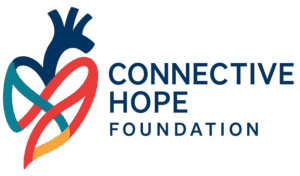What is Loeys-Dietz Syndrome?
Loeys-Dietz Syndrome (LDS) is a rare genetic disorder that affects the connective tissue in the body. This condition can impact the heart, blood vessels, bones, joints, skin, and other organs.
Symptoms
People with Loeys-Dietz Syndrome often exhibit a variety of symptoms, which can vary widely in severity. Common signs include:
- Widely spaced eyes (hypertelorism)
- Bifid or broad uvula
- Craniosynostosis (premature fusion of skull bones)
- Cleft palate
- Club foot
- Translucent skin
- Easy bruising and bleeding
- Recurrent hernias
- Abnormal scarring
- Tortuous (twisted) blood vessels
Causes
Loeys-Dietz Syndrome is caused by mutations in one of several genes, including TGFBR1, TGFBR2, SMAD3, TGFB2, and TGFB312. These genes are involved in the transforming growth factor-beta (TGF-β) signaling pathway, which is crucial for the development and maintenance of connective tissue. The condition is inherited in an autosomal dominant pattern, meaning a child has a 50% chance of inheriting the disorder if one parent has it2.
Complications
The complications of Loeys-Dietz Syndrome can be severe and include:
- Cardiovascular issues: Aortic aneurysms, aortic dissections, and other arterial problems.
- Skeletal issues: Scoliosis, chest deformities, and joint problems.
- Ocular issues: Strabismus (crossed eyes), myopia (nearsightedness), and other eye problems.
- Skin issues: Easy bruising, abnormal scarring, and translucent skin.
Diagnosis
Diagnosing Loeys-Dietz Syndrome involves a thorough physical examination and medical history review. Tests may include:
- Genetic testing for mutations in the relevant genes
- Echocardiogram and MRI to monitor the heart and aorta
- Eye exams to check for ocular issues
- Imaging tests like X-rays and CT scans to assess skeletal abnormalities
Treatment
While there is no cure for Loeys-Dietz Syndrome, treatments focus on managing symptoms and preventing complications12. These may include:
- Medications: Beta-blockers or other drugs to reduce strain on the aorta.
- Surgery: Procedures to repair the aorta, correct skeletal deformities, or address other complications.
- Regular monitoring: Frequent check-ups with specialists to monitor the condition and adjust treatments as needed.
Living with Loeys-Dietz Syndrome
Living with Loeys-Dietz Syndrome requires ongoing medical care and lifestyle adjustments. Regular check-ups with a team of specialists, including cardiologists, geneticists, and orthopedic surgeons, are essential to manage the condition effectively.

